I am the first to admit that I dislike snowmobiles. The noise, the smell, the image, and the environmental impact have always turned me off. I also try to limit ownership of motorized vehicles, because no matter how well you maintain them, they are still a money trap. Alas, though, my daily desire to ski more fresh snow and reach more distant peaks finally won out this year. So I purchased.
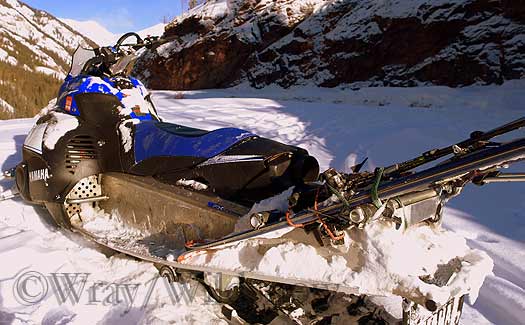
Custom snowmobile ski rack in action in the San Juans, Colorado.
I quickly realized that stock snowmobiles aren’t really setup for skiers (or tall people) and they take a lot more work to operate than one would assume. So I have spent quite a bit of time over the last few months figuring out how to make this machine more useful for my purposes. The first thing that jumped out at me, it needs a ski carry system. So I began the internet search. Looking at offerings from companies such as CFR and X-Rack. Two things became clear, there aren’t many ski rack options for a sled and the ones that do exist aren’t cheap.
So like any self-respecting backcountry skier, I continued to bungee my skis to the tunnel, and generally ignored the problem. That is of course until I got an offer to build something custom…
My friend Andrew just happens to possess both the tools and ability to make this sort of thing happen. Andrew is an avid backcountry skier and has been making custom ski racks, on a one-off basis, for friends in Colorado’s Front Range for a while now. Unfortunately he also has a day job, so production is limited to his copious spare time.
The deal was that I would provide the sled, funding, labor, food, and beverage. Andrew would provide the design and craftsmanship. A good deal if you ask me.
The first step was to send him some photos and measurements of my tunnel.
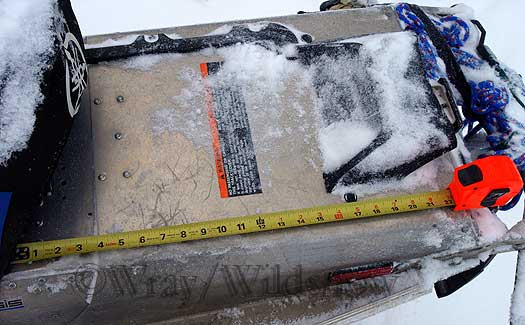
It was a chilly photo session for the luggage rack.
Andrew ordered the appropriate materials and we set up some time to manufacture.
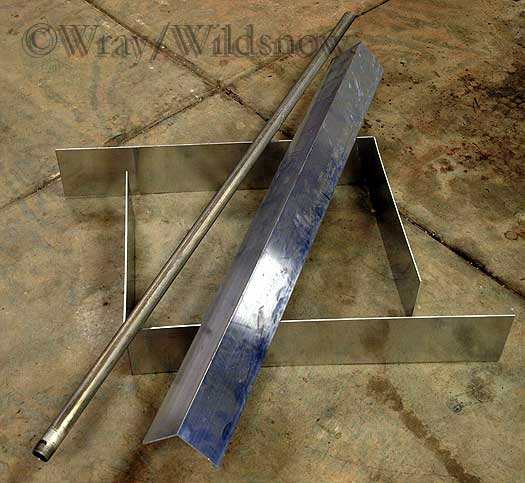
Looking at 4 simple pieces of aluminum, I was wondering if this was a good idea. Andrew has more vision than myself.
The idea was to create a design that was light, reinforced the tunnel walls, and of course secured two pairs of skis to the sled in a solid and convenient fashion. The skis would be held in place by wedging the tails between the rack bars and the foot rails on the sled. Holes would be drilled in the sides of the box portion of the rack to attach bungees for extra peace of mind. We measured as many ski and binding combos as we had on hand to make sure the fit was going to be universal. Luckily Andrew has as many skis as I do, so confidence was high. After measuring twice, it was time to cut.
I began the prep work while Andrew began the metal work.
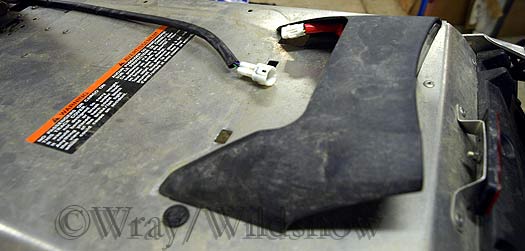
The prep was just some cleaning and removal of the brake light and wire.
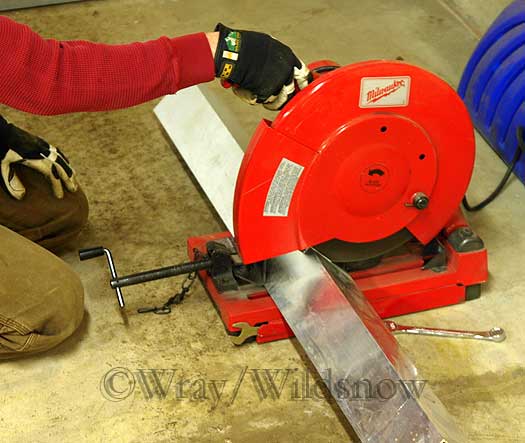
Andrew utilizing one of the many specialized tools in his garage. A garage that impresses me almost as much as Lou's.
Two issues I was sure to mention to Andrew about the design were the inconveniently located exhaust and that I needed my brake light to be visible. We toyed with several ideas before settling on a few modifications to ensure we solved both of these problems.
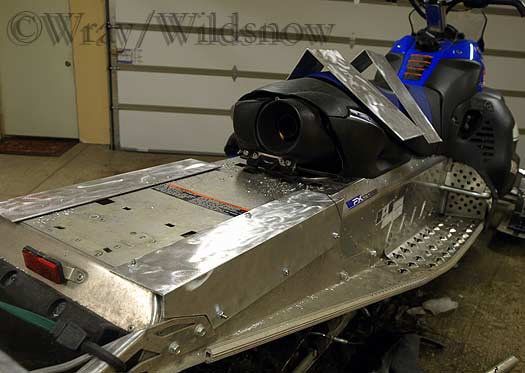
We soon had the base (tunnel reinforcement) on the sled and ready for additional measurement and styling.
We inked out the last stylings for the rack, spot welded the design together, and I left the final cutting and welding to Andrew.
A few days later I got the call that it was ready to be mounted to the sled. I found my way back over to his garage with anxious anticipation. I was not disappointed. The final product looked great. And the ski test, perfect fit. Looks like it’ll work for luggage as well, such as strapping on a backpack. Let the bolting begin.
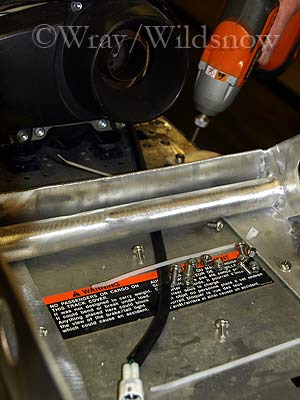
The plastic that covered the brake wire was a casualty. We secured the wire with zip ties instead.
The final version of the ski rack fit perfectly and weighed in right at 7lbs.
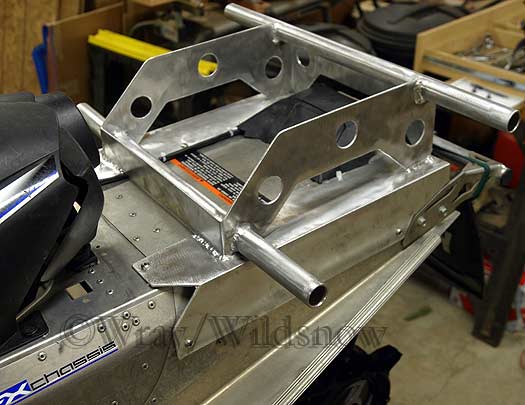
Notice the exhaust is well clear of the rack and the brake light still peeks through back.
After the fact, I have been experimenting with some padding ideas to prevent friction on bindings and skis. I haven’t found the exact solution yet, but I have a new idea using rubber tubing.
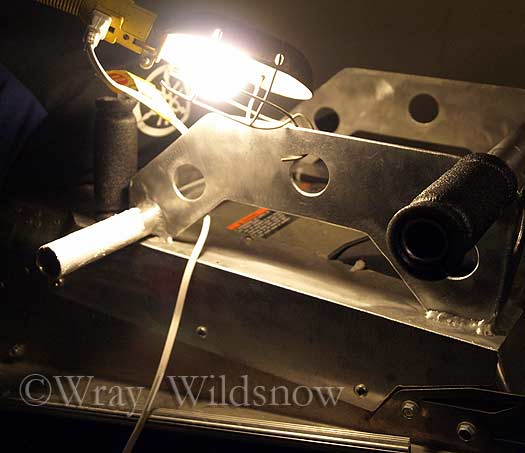
This was my first padding attempt. Pipe insulation secured with zip ties and water-based adhesive. Not durable enough.
In closing, after 20 days of use I have been very pleased with this snowmobile ski rack design. The skis go on and come off quickly and it’s been very durable. Every time I see one of the many junk shows on the back of sleds these days, my tight rig brings me a feeling of comfort.
Though Andrew does this as a hobby, I am sure he could be persuaded to put something together for anyone interested. He is truly a mountain craftsman.
WildSnow guest blogger Caleb Wray is a photographer and outdoor adventurer who lives in Colorado and travels worldwide. He enjoys everything from backcountry skiing to surfing.
